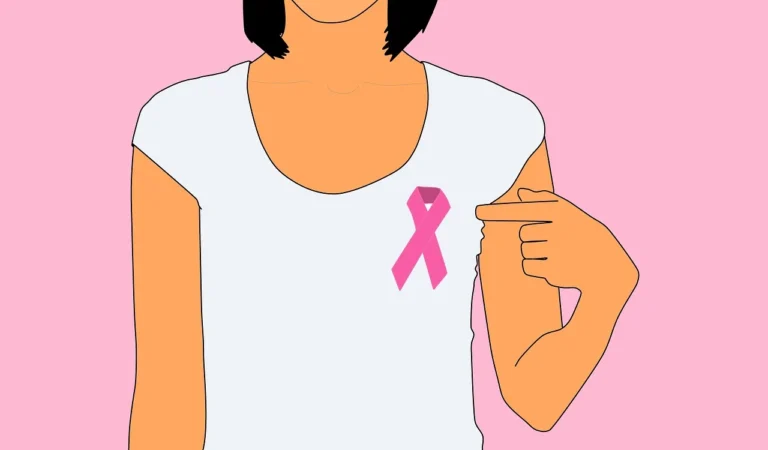Book Appointment Now

Top Ten Public Health Threats of Our Time
The modern world faces an array of complex and evolving public health threats that impact millions of lives globally. From emerging infectious diseases and climate change to non-communicable diseases and mental health crises, these challenges require urgent attention and coordinated responses. According to the World Health Organization (WHO), health threats such as antimicrobial resistance, vaccine hesitancy, and socio-economic disparities exacerbate the burden on already strained healthcare systems (WHO, 2021). Additionally, factors like globalization, urbanization, and environmental degradation contribute to the growing prevalence of these issues. Understanding and addressing the top ten public health threats of our time is crucial to improving global health security and ensuring a healthier future for all populations.
Our nursing experts can deliver 100% custom paper about major public health threats according to your order instructions.
Write my nursing essay
1. Pandemics and Emerging Infectious Diseases
The COVID-19 pandemic highlighted the devastating impact of infectious diseases on public health, economies, and societies. With increasing globalization, novel pathogens continue to emerge. According to the World Health Organization (WHO), the risk of future pandemics is rising due to climate change, deforestation, and increased human-animal interactions (WHO, 2022). In 2020 alone, COVID-19 led to over 3 million deaths globally, overwhelming healthcare systems and disrupting livelihoods (Johns Hopkins University, 2021). Enhanced surveillance, vaccine development, and international collaboration are crucial to mitigating future pandemics. Check out : Emerging and Re-emerging Infectious Diseases Assignment
2. Antimicrobial Resistance (AMR)
The misuse and overuse of antibiotics in human medicine and agriculture have led to the rise of drug-resistant bacteria, making infections harder to treat. According to the Centers for Disease Control and Prevention (CDC), AMR causes over 1.27 million deaths annually worldwide (CDC, 2022). Diseases once easily treated with antibiotics, such as tuberculosis and pneumonia, now pose significant threats due to resistant strains. Without urgent action, AMR could lead to 10 million deaths per year by 2050 (O’Neill, 2016).
3. Climate Change and Environmental Health
Climate change has far-reaching health consequences, including heat-related illnesses, respiratory diseases from air pollution, and the increased spread of vector-borne diseases like malaria and dengue. A study by the Lancet Countdown (2021) found that climate change contributed to 5 million excess deaths annually between 2000 and 2019. Rising sea levels and extreme weather events also threaten food security and access to clean water, exacerbating health inequalities worldwide.
4. Non-Communicable Diseases (NCDs)
Chronic diseases such as heart disease, cancer, diabetes, and stroke are the leading causes of death worldwide, accounting for 74% of all deaths (WHO, 2021). Unhealthy lifestyles, including poor diet, lack of exercise, and tobacco and alcohol use, contribute significantly to NCDs. For instance, cardiovascular diseases alone cause 17.9 million deaths annually (Global Burden of Disease Study, 2020). Addressing NCDs requires public health interventions promoting healthy behaviors, early detection, and improved healthcare access.
5. Mental Health Crisis
Mental health disorders, including depression and anxiety, have escalated in prevalence, particularly following the COVID-19 pandemic. The WHO estimates that nearly 1 billion people suffer from a mental health disorder, with depression alone affecting over 280 million individuals (WHO, 2022). Suicide is the fourth leading cause of death among 15–29-year-olds. Despite the growing burden, mental health services remain underfunded, with only 2% of global health budgets allocated to mental health care (UN, 2021).
6. Obesity and Poor Nutrition
Obesity rates have tripled worldwide since 1975, affecting over 650 million adults and 340 million children and adolescents (WHO, 2021). Poor diet contributes to obesity and is linked to conditions such as diabetes, cardiovascular disease, and some cancers. In the U.S., over 40% of adults are obese, increasing healthcare costs significantly (CDC, 2022). Ultra-processed foods, sugar-laden beverages, and sedentary lifestyles are major contributors, necessitating public health policies promoting healthier eating and physical activity. Read about Nurses role in obesity management through educational programs.
7. Access to Clean Water and Sanitation
Despite global progress, 2.2 billion people lack access to safe drinking water, and 3.6 billion lack proper sanitation facilities (UNICEF & WHO, 2022). Contaminated water contributes to the spread of diseases such as cholera, dysentery, and hepatitis A, causing over 485,000 diarrheal deaths annually (WHO, 2021). Climate change further threatens water security by increasing droughts and extreme weather events, making access to clean water a critical public health priority. Read about Nurses as Advocates for Clean Water Access in Developing Areas
8. Substance Abuse and Addiction
The opioid crisis, alcohol abuse, and illicit drug use continue to devastate communities worldwide. The United Nations Office on Drugs and Crime (UNODC) reports that 275 million people used drugs in 2021, with 36 million suffering from substance use disorders (UNODC, 2022). In the U.S., opioid overdoses caused over 107,000 deaths in 2021, a record high (National Institute on Drug Abuse, 2022). Effective policies, harm reduction strategies, and increased access to treatment are essential in addressing substance abuse.
9. Vaccine Hesitancy and Misinformation
Despite the proven effectiveness of vaccines in preventing diseases such as measles, polio, and COVID-19, vaccine hesitancy remains a significant challenge. The WHO lists vaccine hesitancy among the top ten global health threats (WHO, 2019). The spread of misinformation, particularly on social media, has contributed to declining vaccination rates, leading to outbreaks of preventable diseases. For example, global measles cases increased by 79% in 2022 due to reduced vaccine coverage (UNICEF, 2022). Strengthening public trust in vaccines through education and policy enforcement is essential. See also Combating Vaccine Hesitancy Through Community Nursing Efforts
10. Health Inequalities and Socioeconomic Disparities
Health disparities based on income, race, and geography persist globally, affecting access to quality healthcare and health outcomes. The WHO reports that people in low-income countries have a life expectancy 18 years lower than those in high-income nations (WHO, 2021). Socioeconomic factors influence exposure to health risks, access to nutritious food, and availability of healthcare services. Addressing these disparities requires policy changes that ensure equitable healthcare access, social protection, and economic opportunities.
The top ten public health threats of our time present significant challenges that require global cooperation, innovative solutions, and sustained investment. From pandemics and antimicrobial resistance to climate change and vaccine hesitancy, these health issues impact societies at every level. Addressing these threats demands a multidisciplinary approach, combining public health policies, technological advancements, and improved healthcare infrastructure. By prioritizing preventive measures, equitable healthcare access, and global partnerships, we can build a more resilient public health system capable of mitigating future crises and improving overall well-being worldwide.
References
- Centers for Disease Control and Prevention (CDC). (2022). Antimicrobial resistance threats report. Retrieved from www.cdc.gov
- Global Burden of Disease Study. (2020). Worldwide trends in NCDs. Retrieved from www.healthdata.org
- Johns Hopkins University. (2021). COVID-19 mortality statistics.
- Lancet Countdown. (2021). Climate change and global health.
- National Institute on Drug Abuse. (2022). U.S. overdose deaths hit record high.
- O’Neill, J. (2016). Tackling drug-resistant infections globally: Final report.
- United Nations Office on Drugs and Crime (UNODC). (2022). World Drug Report.
- UNICEF & WHO. (2022). Global progress on water, sanitation, and hygiene.
- World Health Organization (WHO). (2019). Ten threats to global health. Retrieved from www.who.int
- World Health Organization (WHO). (2021). Global health observatory data.
- World Health Organization (WHO). (2022). Mental health statistics.







